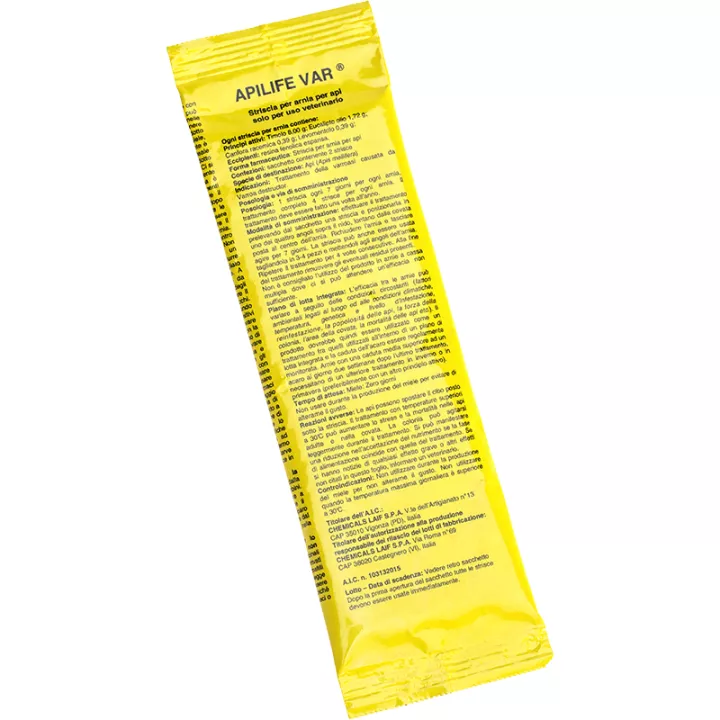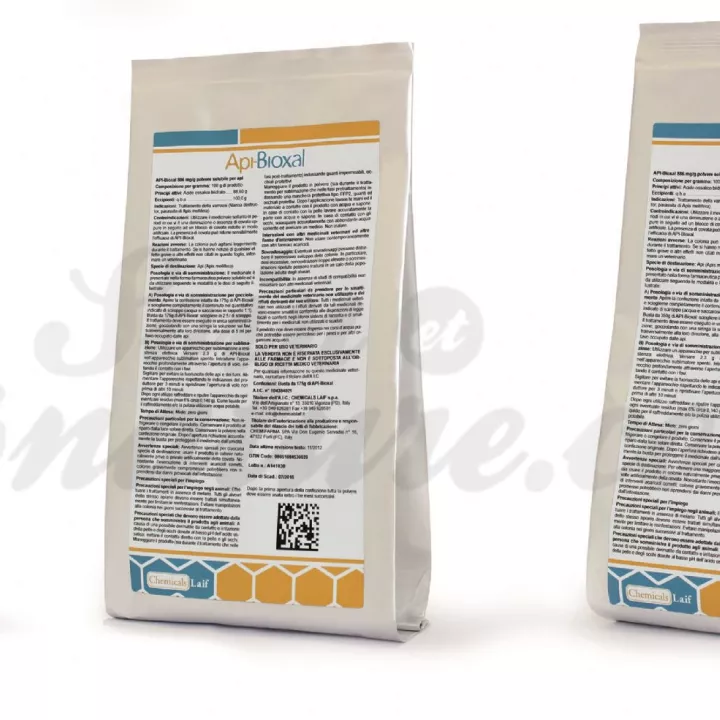What is Apitraz used for? 10 strips per 5 hives.
APITRAZ 500 mg Amitraz per strip, apply 2 strips per hive after the last harvest for 8 to 10 weeks to combat varroasis in bees. Treatment of external parasitic diseases caused by Varroa destructor that are sensitive to amitraz.
Beekeeping is crucial to the pollination of crops and the production of quality honey. However, bees, those precious pollinators, face many challenges, one of the most formidable being Varroa destructor, a parasitic mite that can decimate entire colonies. To protect our bees and maintain healthy hives, the use of Apitraz, containing amitraz, is an effective option for controlling varroa destructor.
Varroa destructor is a parasitic mite that attacks bees. Originating in Asia, it has invaded European bee populations and become a scourge for bee colonies worldwide. Varroa feed on the bees' hemolymph, weakening individuals and the colony as a whole. Varroasis, the disease caused by these parasites, is one of the main threats to bee survival.
Apitraz is a treatment specially designed to combat varroasis in bees. Its active ingredient, amitraz, is effective against Varroa mites sensitive to this substance. It is an approved product for the treatment of external parasitic diseases caused by Varroa destructor.
One of the features of Apitraz that makes it attractive to beekeepers is its ease of use. Apitraz strips are easy to handle and apply in the hive. Simply hang the Apitraz strips in the hive according to the manufacturer's recommendations. These strips slowly diffuse amitraz into the colony, killing Varroa mites sensitive to the drug.
Apitraz's effectiveness against varroa has been proven for many years. Beekeepers all over the world rely on this treatment to protect their bee colonies against these fearsome parasites. By following the instructions for use, you can contribute to the health of your bees and the preservation of your colonies.
Bees play an essential role in the pollination of plants, contributing to the production of many of the fruits, vegetables and seeds we eat every day. Controlling varroasis is therefore crucial to the survival of bees and global food security.
By choosing Apitraz as your varroasis control solution, you are taking a proactive step to protect our precious pollinators and support the vitality of your bee colonies. Contribute to the preservation of bees by using Apitraz and helping to maintain healthy hives.
We also offer Apivar strips at the best price in our online pharmacy.
How to use these strips
Use two strips per hive (i.e. 1 g of amitraz per hive), and hang them between the frames at bee cluster level.
Place the strips between the frames where the bees are most mobile. Hang the strips in such a way as to give the bees free access to both sides, while maintaining a minimum space for the bees.
- Treat all the hives in the apiary at the same time to prevent the risk of robbing.
- Do not reuse strips.
- It is recommended not to treat during honeyflow, but after the honey has been harvested. See also "Dosage and administration".
- Inappropriate use of the product could lead to an increased risk of resistance development and ultimately to ineffective treatment.
- The level of varroa infestation in bee colonies should be monitored regularly during treatment and also in the period following.
- The product should be used as part of an integrated varroa control program.
- Resistance to amitraz has been reported in some Varroa populations.
- In countries where resistance to amitraz is recognized, or where resistance to amitraz is suspected, use of the product should ideally be based on the results of sensitivity tests (e.g. Beltsville test). For further information, consult your veterinarian or local apiary inspector.
Give your opinion on the use and dosage of APITRAZ sachet of 10 strips 25 cm 500mg Amitraz 5 hives with our partner Verified Reviews after your purchase.
Precautions for use
- Do not exceed or reduce recommended dose and duration of use.
- Remove strips at end of treatment.
What is it made of?
White rectangular plastic strap with two fasteners and fold mark.
- Poly(ethylene vinyl acetate)
- Styrene-butadiene copolymer
- Liquid kerosene
- Calcium magnesium carbonate
- Pentaerythrityl tetrakis [3-(3,5-di-tert-butyl-4-hydroxyphenyl)propionate
- Didodecyl 3,3′-thiodipropanoate
- Erucamide
- 50% siloxane polymer dispersion
Presentation:
Available in Sachet of 10 strips of 25cm.









